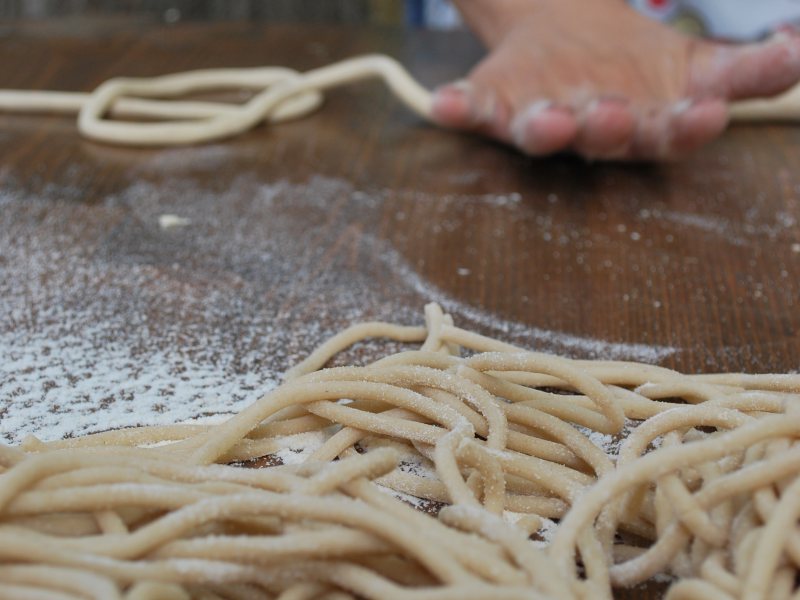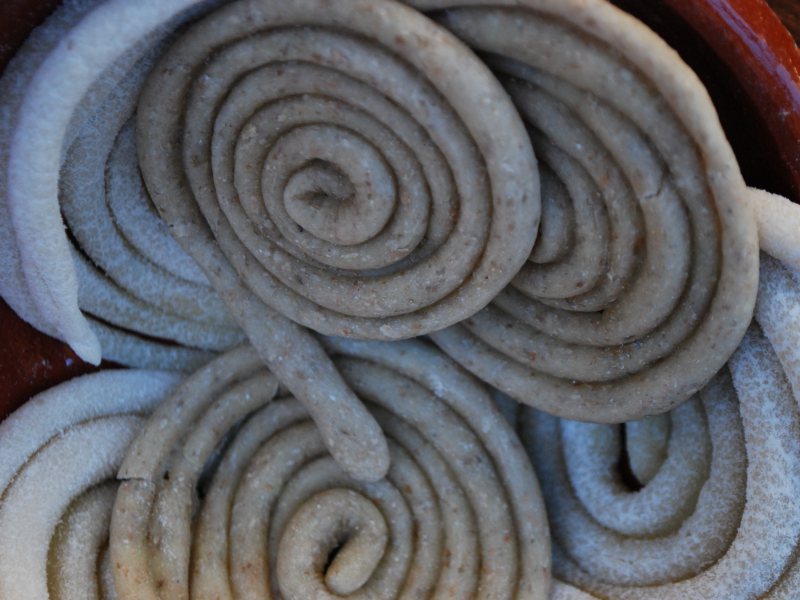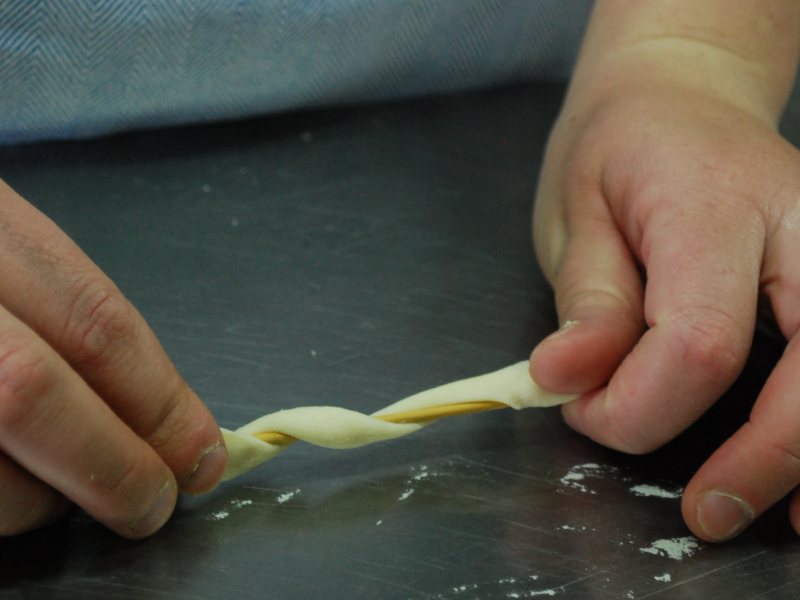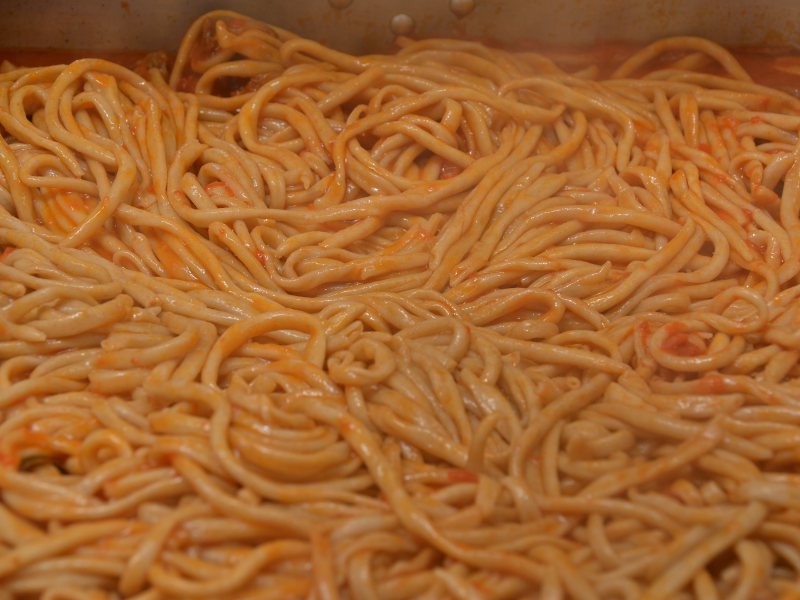Starters
Descrizione
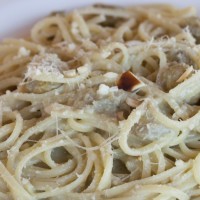
Bucatini cu u stoccu [Bucatini with stockfish]
U pisci stòccu (stocco) is stockfish [dried cod] used as the basis of many dishes typical of the province of Reggio Calabria. Its use dates back to the beginning of the sixteenth century, when dried cod began to be imported into Calabria from the port of Naples, the capital of the Kingdom. From there the boats arrived at Pizzo Calabro and mules carried the stocco along the dirt tracks of the period bringing it to Mammola, the stockfish town, as it has been called ever since. After steeping and preparing it, it was sold and continues to be sold in the whole of the province of Reggio.
Preparation
In an earthenware pan, fry chopped onion and garlic until browned. Then place the pieces of fish in the pan, taking care not to mix them but only move them by shaking the pan. When the fish is half-cooked, remove it from the pan and leave it to one side. Then add finely chopped tomatoes and the red pepper to the base left in the pan by the fish and use these to make sauce. When the sauce is almost cooked, put the fish back into the pan and cook for about 5 minutes. Remove the fish again and place it on a platter. Boil water in another pot to cook pasta al dente. When the pasta is strained, toss it in the sauce. The fish will be served after the pasta as the main dish.
Cordeddi cu sucu [Strings with sauce]
Cordelle [strings], known all over Greek Calabria, are a type of pasta even older than maccheroni and even found less frequently. This kind of pasta is made from rye flour (jermanu) that is hardly ever used today.
Preparation
Egg and milk are folded into this dark rye flour to obtain one long string without a central hole. This long pasta string (cordeddu) is then rolled to become a helicoid and left to dry. It is cooked in abundant salted boiling water and seasoned in a very simple manner: oil, cheese and black or red pepper, otherwise with goat’s meat sauce.
I Ricchi i previti [Priests’ ears, a type of pasta]
These are tiny durum-wheat dumplings. Once kneaded and formed, each dumpling is “scored” on the surface using a specially carved wooden implement. Otherwise the prongs of a fork will do. These dumplings are typical of Roghudi, but known elsewhere in Greek Calabria. They are made from barley flour and potatoes.
Maccarruni i’casa [Home made maccheroni]
Maccarruni are a local variation on that homemade pasta theme, widespread in Calabria, known as maccherone al ferretto [macaroni on the wire]. The oldest traditional method requires the dough, made from water and flour, to be kneaded and rolled by hand, one by one, using the length of a wire (cànnici) to make a hole right through the centre of each string. Once cooked, the pasta is seasoned with white or red sauce made of stewed goat’s meat. A sprinkling of grated salted ricotta completes the dressing.
Preparation
Prepare the sauce by frying an onion and 1 kilo of goat’s meat cut into small pieces in a pan with olive oil. After a while, when the meat is golden brown, add the fresh tomato pulp, a little warm water and cook together. Meanwhile make the macaroni mixing and kneading water and flour; make stringsof the pasta and roll them around a long wire to obtain a long string with a hole running through the centre, like a straw. Once you have cooked the pasta, season it with plenty of sauce and a sprinkling of salted goat ricotta or another kind of grated cheese.
Pasta curta chi mulingiani [Short pasta with aubergines]
This dish, of which aubergines are the main ingredient, are made mostly on the feast day of the patron saint, which, in most cases is celebrated in summer, when kitchen gardens are particularly bountiful.
Preparation
Finely slice a pound of aubergine, sprinkle the slices with salt and leave them to drain for about one hour, then fry them in olive oil. In the meantime, prepare a tomato sauce with oil and a lot of basil. When cooked, add to the sauce to the fried aubergine, a little grated cheese, some breadcrumbs and two mashed hard-boiled eggs. Amalgamate the ingredients and the pasta by stirring them all gently and slowly.
Taglierini e ciceri [Pasta and chickpeas]
The tastiest version of this recipe is probably chickpeas in sauce, without tomatoes, Bova style. The pasta made from flour and water is kneaded and rolled with a rolling pin until it reaches the proper thickness. After, it is rolled and thinly sliced, producing rather thin tagliolini that blend well with the tasty white chickpea soup which seasons it.
Preparation
Steep the dried chickpeas overnight and cook them in abundant salted water in an earthenware pot and add two bay leaves. Meanwhile make the taglierini, kneading flour and water to obtain a soft pliable dough. Roll out the dough with a rolling pin. Then fold the sheet of pasta into a roll and cut it into small slender strips, taglierini, with a sharp knife. Boil the pasta and when it is strained add it to the chickpeas and season the whole with raw olive oil and chopped parsley.
Struncatura [The residue]
Stroncatura is a particular type of pasta, traditionally typical of the poorest social classes of the area. It was made at home using the “sweepings” of the granary, that is, the mixed residue of flour and bran left over after milling. It was, of course, very dark in colour and very coarse in texture. It was sold at a very low price. Today stroncatura has become popular, although the flours used now are whole grain meal and durum wheat.
Preparation
Make pasta with whole wheat flour and a little water. Roll the dough and cut it into linguine (long thin strips]. Prepare a sauce with oil, garlic, anchovies and black olives. Add the pasta to the sauce, sprinkle with cheese and toasted breadcrumbs.






